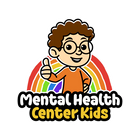Anxiety is a common mental health condition that can affect how children think, feel, and act. While it is normal to feel nervous sometimes, ongoing worry or fear may need extra care. Treating anxiety in children helps them feel calmer, confident, and able to enjoy daily life.
There are many tools that can support children with anxiety. These may include therapy, medication, and learning coping skills, as well as making lifestyle changes.
The goal is to give children the support they need so anxiety does not get in the way of their family life, school, and friendships.
Below, you will learn about when treatment may be needed, the different types of care available, and important things for families to consider.
Recognizing When Treatment is Needed
Some children may complain of stomachaches, headaches, or have trouble sleeping. Others might seem more on edge — restless, fidgety, or quick to cry. A child may also become clingy, avoid school or social events, or constantly seek reassurance from parents. Over time, these challenges can make it harder for them to perform everyday activities.
It is important to know the difference between normal stress and an anxiety disorder. Everyday stress — like worrying about speaking in class or being shy around new people is common and usually passes quickly. Anxiety disorders, on the other hand, are more persistent and disruptive.
If your child’s worries or fears seem much greater than what other children experience, it may be time to reach out for professional help.
A pediatrician or school counselor can help identify signs of anxiety and suggest initial strategies or referrals. A child psychologist, on the other hand, can perform a detailed assessment, diagnose anxiety disorders, and provide specialized therapy.
Treating Anxiety in Children
There is no single way to treat anxiety. The right approach depends on your child’s age, symptoms, and individual needs. Treatment may include therapy, medicine, or other supportive tools that help children manage their worries.
Here are common treatment options families may explore with a healthcare professional:
Behavioral Therapy
Therapy is the first step in treating anxiety in children because it teaches lasting skills without side effects. Different types of behavioral therapies can help children understand their thoughts, manage fears, and build healthy coping strategies.
-
Cognitive Behavioral Therapy (CBT) - This is the most common therapy for child anxiety. It helps children notice unhelpful thoughts and replace them with more realistic ones. Some CBT programs focus on specific anxiety issues, but most are designed to help children manage a variety of anxiety disorders [*].
-
Dialectical Behavioral Therapy (DBT) - The name “dialectical” comes from the idea of balancing two things at once: accepting feelings as they are (mindfulness) while also learning ways to change unhelpful thoughts and behaviors (similar to cognitive-behavioral therapy). In children, DBT teaches skills that can help them handle intense emotions, reduce anxiety, and respond to stress in healthier ways.
-
Exposure Therapy - Children receiving exposure therapy gradually face the situations or things that make them anxious. During sessions, a therapist creates a step-by-step plan that starts with less stressful situations and slowly progresses to more challenging ones.
-
Play Therapy - Often used with younger children, play therapy lets kids express feelings and work through worries using toys, games, or art. A therapist observes and interacts with the child to help them explore emotions they may not yet have words for [*].
-
Acceptance and Commitment Therapy (ACT) - This is usually used with older children and teens to help them manage anxiety. “Acceptance” means noticing negative thoughts and feelings without letting them stop you, while “commitment” means taking positive steps toward your goals despite anxiety. Although ACT may help young people, more research is needed to determine the best ways to use it for different ages [*].
Medication
Sometimes, anxiety in children is so strong that therapy alone may not be enough. In these cases, doctors may recommend medication to help reduce symptoms and make it easier for children to practice coping skills.
Here are the common types of medication for anxiety:
-
Selective Serotonin Reuptake Inhibitors (SSRIs) - These medicines help increase serotonin, a brain chemical that affects mood and anxiety. They are usually the first choice for children with anxiety disorders. SSRIs are well tolerated, meaning most children can take these medications without serious problems [*].
-
Serotonin-Norepinephrine Reuptake Inhibitors (SNRIs) - These medications work on both serotonin and norepinephrine to help reduce anxiety symptoms, and are sometimes used if SSRIs are not effective or suitable for the child.
Medication is usually most effective when combined with therapy, which gives children both immediate relief and long-term tools to manage anxiety.
| Medication Type |
Effects |
Examples |
Precautions |
| Selective Serotonin Reuptake Inhibitors (SSRIs) |
Boosts serotonin to improve mood and lower anxiety. |
Fluoxetine (Prozac), Sertraline (Zoloft), Escitalopram (Lexapro) |
Generally well tolerated. Possible side effects: stomach upset, headaches, sleep or mood changes. |
| Serotonin-Norepinephrine Reuptake Inhibitors (SNRIs) |
Increases both serotonin and norepinephrine to ease anxiety. |
Venlafaxine (Effexor XR), Duloxetine (Cymbalta) |
Side effects can include stomach upset, sleep changes, or restlessness, so doctors usually monitor children closely while they’re taking SNRIs. |
Other Approaches
Therapy and medication may form the foundation of treatment, but small habits can also help children manage anxiety. These healthy routines don’t replace professional care — they strengthen it and provide kids with tools they can use day to day.
-
Relaxation skills - Techniques like box breathing, guided imagery, or progressive muscle relaxation (PMR) give children tools to calm their bodies and minds [*].
-
Healthy routines - Consistent sleep, proper nutrition, and movement every day help stabilize mood and reduce feelings of anxiety.
-
Positive coping strategies - Activities like journaling, drawing, or problem-solving can help children process their feelings and find solutions to challenges. Parents and caregivers can think through situations together with their child, which guides them in making decisions.
-
Family support - Parents and caregivers can strengthen treatment by demonstrating calm responses, practicing coping strategies together, and maintaining open dialogue about feelings.
-
School partnership - Working with teachers or school counselors gives children extra support in the classroom and helps adults understand their needs.
Important Considerations
Early diagnosis and intervention are key in helping children manage anxiety. The sooner anxiety is recognized and addressed, the easier it is to support children in building coping skills. Early care can prevent anxiety from interfering with school, friendships, and daily routines.
Treatment should be individualized because every child is unique. What works for one child may not be effective for another, so therapy, medication, and supportive strategies should be tailored to each child’s strengths and challenges.
Parents and caregivers help children succeed in treatment by practicing coping skills together, keeping communication about emotions consistent, and providing a steady, reassuring environment.
Focusing on early, personalized care and strong family involvement gives children the best chance to build lasting skills.
Anxiety Treatment Centers
When anxiety significantly affects a child’s daily life, specialized care can help. These treatment centers offer expert therapy, family support, and evidence-based interventions for children:
Resources
Families seeking reliable guidance on supporting children with anxiety can find clear, evidence-based information through the following pages:


